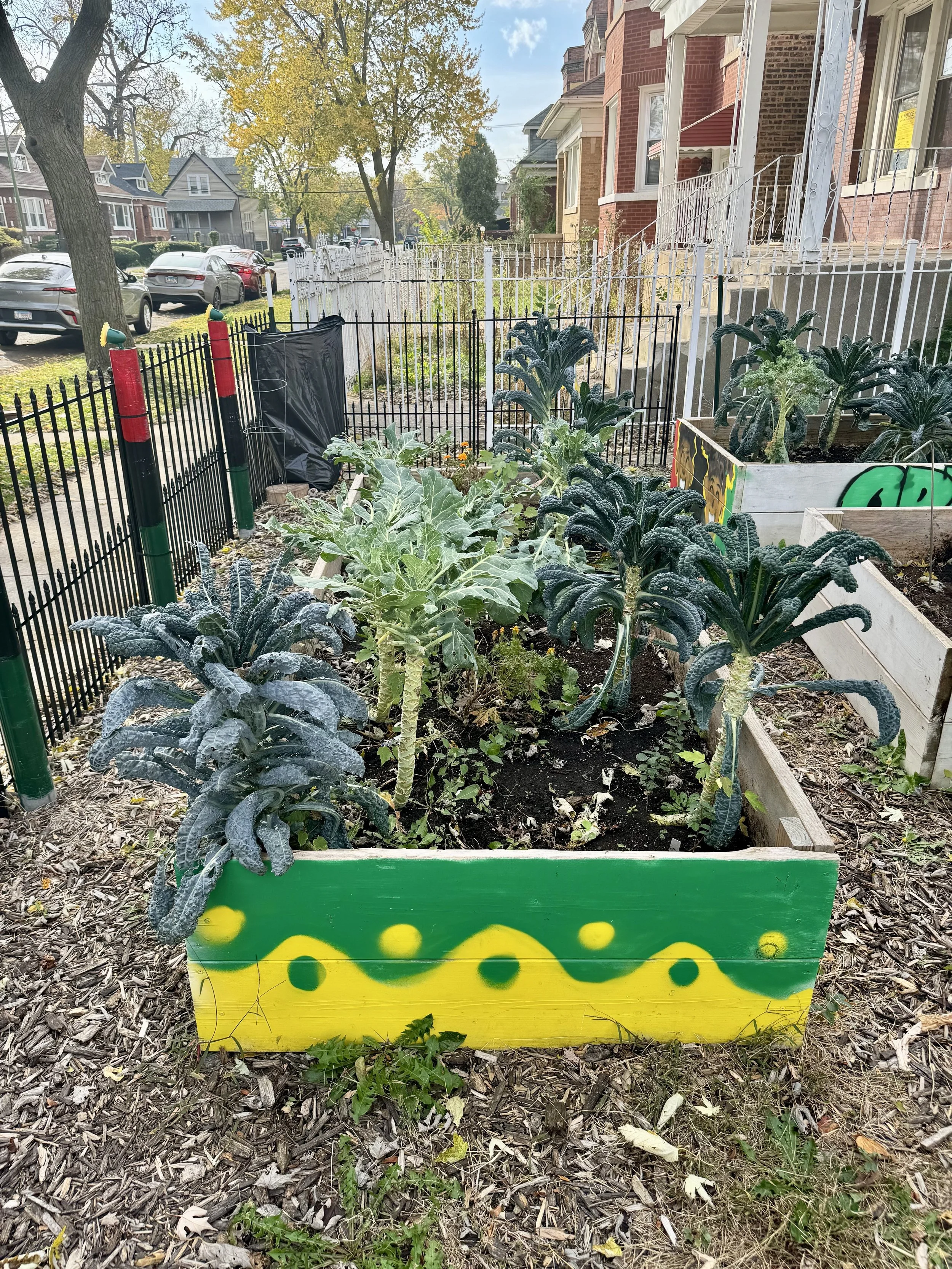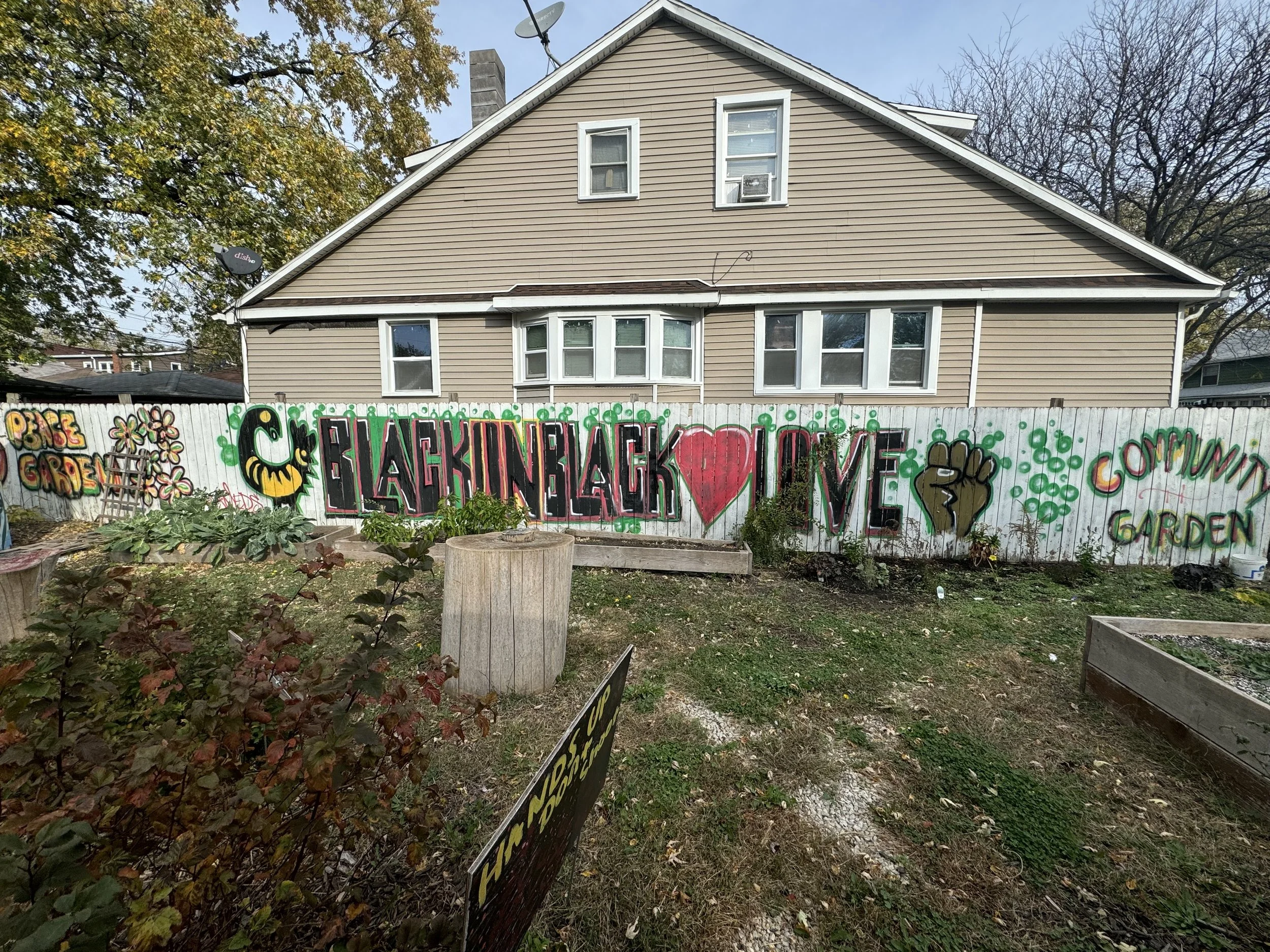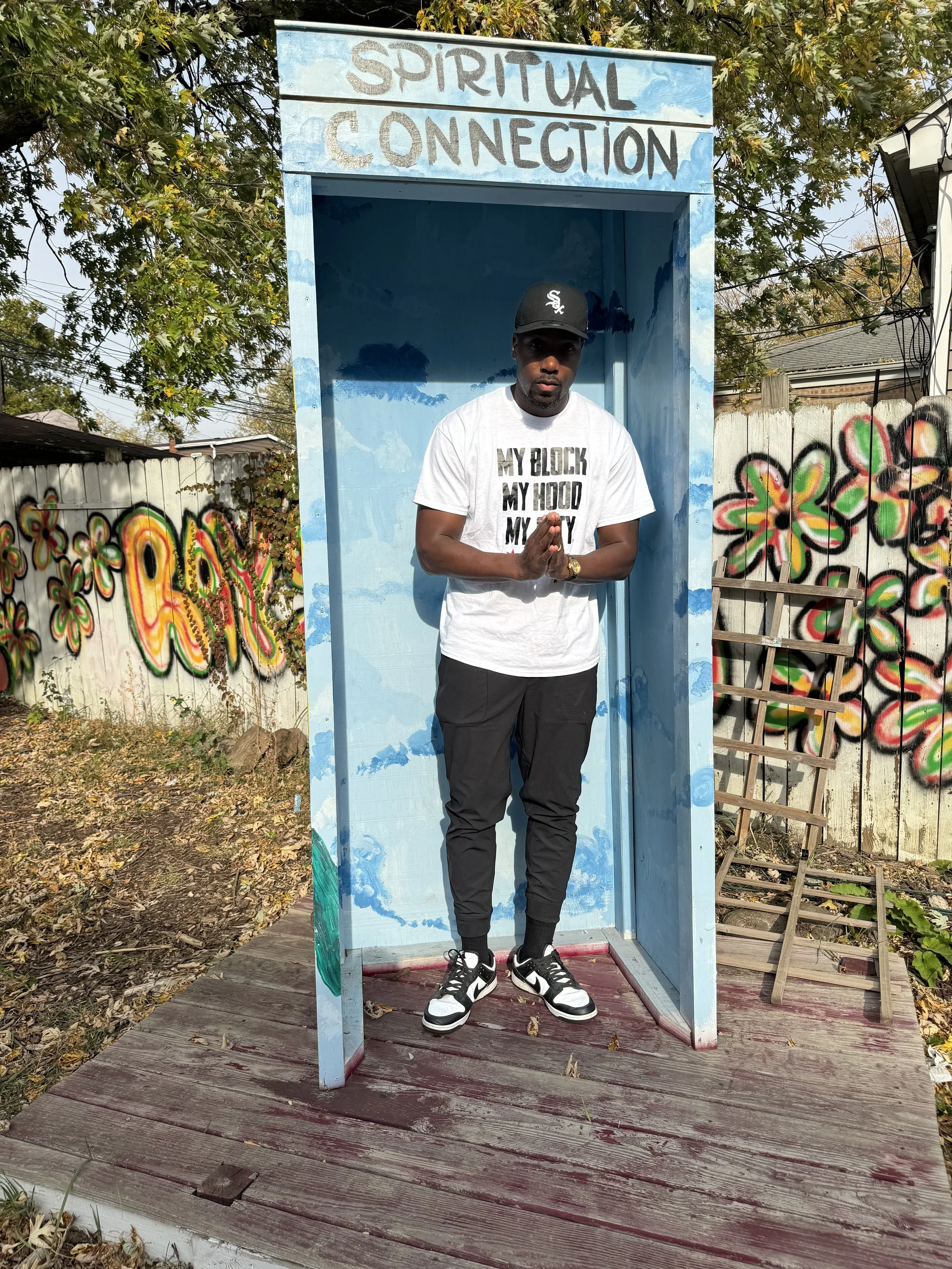Block 16: “Black On Black Love”
Block 16: “Black-on-Black Love”
There are so many beautiful things happening in Chicago—you just have to get up and explore to see them. These gems aren’t on Yelp reviews or tourist websites; you have to truly immerse yourself in the streets to find them. This kind of beauty can’t be seen if you carry ulterior motives or the weight of expectations. I go as I am.
Today, I stopped by 86th and Carpenter in the Auburn Gresham community. This is the home of the Black-on-Black Love Community Garden, led by Valerie Goodloe.
Valerie’s philosophy is simple: instead of Black-on-Black crime, we need Black-on-Black love. This converted lot, nestled in the middle of a residential block, is one of the best uses of space I’ve ever seen. Valerie shared the garden’s origin story: “This lot used to be full of abandoned cars—it was a mess. We decided to clean it up and make it look better. That effort grew into something deeper: a more involved space that we now use for events.”
Originally from the West Coast, Valerie and her husband have brought some of that West Coast flavor to the South Side of Chicago. Valerie also produced a documentary called Love Is Not Enough. You can find more about it here.
One of the garden’s standout features is the Spiritual Connection booth. It’s a wooden phone booth with “Spiritual Connection” painted at the top—something I’ve never seen before. The sentiment is powerful: if you’ve lost someone to gun violence, you can step into the booth to pray. Tragically, this pain is all too common in Chicago. Most kids in my program have attended at least 15 funerals by the time they’re 15. Every student should visit the Black-on-Black Love Garden to say a quick prayer.
The garden is more than just a name—it’s a transformative space. Standing there, I felt like I was on a farm in North Carolina. The garden boasts massive kale, collard greens, and broccoli. It also showcases artwork by women incarcerated in the juvenile justice system. One piece, by a young queen named Autumn, stood out. At the Audy Home (a juvenile detention center), Autumn is known as the barber. Valerie is hopeful that her life can turn around, and Autumn’s art is a testament to that hope.
Valerie’s efforts extend beyond the garden—she volunteers at the JTDC (Juvenile Temporary Detention Center) to give young women an outlet. What a superhero.
Today, I also met a unique individual—a new friend named Perk. It was his birthday. Every block I visit seems to have a “Perk”: someone dedicated to ensuring their block’s tranquility. Perk embodies the idea of making small, meaningful changes to improve life on his block.
He told me how he goes to the meat market on 79th and Vincennes, buys as much chicken as he can afford, and fires up the grill. “I’ll cook the first 25 pieces,” he said, “and y’all can cook the rest.” It’s an impromptu barbecue that brings the community together.
Neighbors walk up, saying, “Man, Jo, can I get a piece of chicken?” They eat straight off the grill. Perk also ensures elders on the block are taken care of, sending food to them with others’ help. When he has extra money, he buys tots, soda, and coleslaw to round out the meals.
I spent a lot of time with Perk today, just talking and learning from him. What a phenomenal human being.
Perk, Valerie, and her husband also visit jails and youth facilities to speak with the incarcerated. They keep it real, sharing their own stories to inspire hope. Perk, in particular, talks about his time in jail, how he earned work release, and the challenges of rebuilding your life after incarceration. He believes many young people are conditioned by the system to return.
These are the people who make Chicago beautiful: individuals who dedicate themselves to building love, hope, and community.




